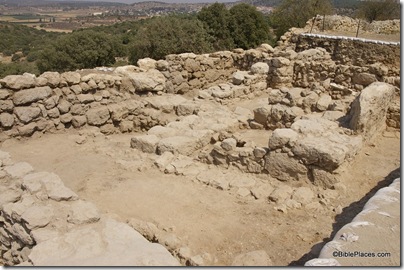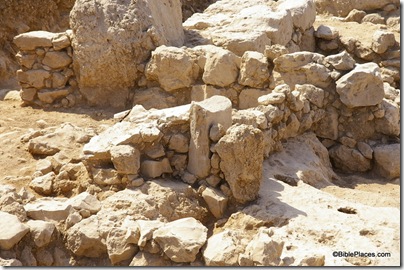The Ingeborg Rennert Center, The Martin (Szusz) Department of Land of Israel Studies and Archaeology, The Faculty of Jewish Studies, Bar-Ilan University invite you to the 14th Annual Conference of The Ingeborg Rennert Center for Jerusalem Studies
“NEW STUDIES ON JERUSALEM”
Thursday, November 13, 2008
8:20 gathering
8:45 opening remarks:
Prof. M. Orfali, Dean of the Faculty of Jewish Studies, Bar-Ilan University
Prof. J. Schwartz, Director of the Ingeborg Rennert Center for Jerusalem Studies
Prof. A Faust & Dr. E. Baruch, conference organizers
Session 1 – 9:00- 10:30
Chair: Aaron Demsky
Eilat Mazar
The Stepped Stone Structure in the City of David in Light of the New Excavations in Area G
Moshe Garsiel
The Elah Valley’s Battle, the Duel of David’s and Goliath and Why Goliath’s Head and Weapons End
Up in Jerusalem
Avraham Faust
Sennacherib’s Campaign to the Judean Highlands and Jerusalem: A New Perspective
Tsvika Tsuk
“And Brought the Water to the City” (2 Kings 20, 20): Water Consumption in Jerusalem in the
Biblical Period
Discussion
Break
Special Discussion- 10:50-11:40
Shlomo Bunimovits & Avraham Faust
The Archaeology of the Biblical Period in the Twenty-First Century: Towards a New Dialogue
between Archaeology and the Bible
Discussion
Break
Session 2 – 12:00- 13:50
Chair: Ben-Zion Rozenfeld
Joseph Patrich
On the Chamber Called House of Stone (beth even), Which was Facing the Northeast Corner of the
Temple Building (birah) (Mishnah, Parah 3:1)
Michael Ben-Ari
Recollections of the Temple: Between Yavne and Lod and Between the Ideal and the Real
Ehud Netzer
How to Handle the Different Reconstructions of the Temple and its Surrounding Courts
Joshua Schwartz
The Temple Cult Without the Sages: Prolegomena on the Description of the Second Temple Period
Cult according to Sources of the Second Temple Period
Yehoshua Peleg
The Pre-Herodian Sanctified Temple Area and Outer Court.
Discussion
Lunch Break
Session 3 – 14:50-17:00
Chair: Hanan Eshel
Eyal Baruch
The Palatial Mansion in Jerusalem: Class and Ideology
Yuval Shahar
The Concept of the Temple Mount in the Second Temple Period
Ram Bouchnick, Nimrod Marom & Guy Bar-Oz
“Rams from Moab and Ewes from Hebron”: Herd Maintenance Strategies in the Late Second Temple
Period in Jerusalem
Zachi Zweig
New Information from Various Temple Mount Excavations from the Last Hundred Years
Yair Talmor
Between the Church of the Holy Sepulchre and the Nea Church – The Religious Space of Byzantine
Jerusalem
Discussion
Break
Session 4 – 17:20- 19:10
Chair: Yvonne Friedman
Peretz Reuven
“A Female Slave from the Harem Who Became the Mother of the Caliph”: a Suggestion to Connect
an Unknown inscription from the Al-Aqsa Mosque to the Mother of the Abbasid Caliph Al-Muqtadir.”
Nissim Dana
The Prophet Mohammad’s Night Ascent to Heaven: A Review of the Passage in the Qur’an and in
Other Islamic Sources
Shelomo Lotan
The Symbolism of Jerusalem and the House of King David in the Teutonic Military Order Medieval
Heritage
Josef Drory
The Contribution of Franciscan Documents for Esteem of the Local Minorities’ Rights in Mamluk
Jerusalem
Oded Shay
The Beginning of Historical Documentation and Modern Archives of the General Population in
Jerusalem at the End of the Ottoman Period
Discussion
The conference proceedings (app. 400 pp. including 2 articles in English and 20 articles in Hebrew,
with English abstracts) will be on sale during the conference.
HT: Joe Lauer

